This image of Saturn was taken by Voyager I in 1980
Click on image for full size
Courtesy of NASA
Related links:
Saturn's rings
Discover Saturn
Like the inner planets and Jupiter, Saturn is clearly visible in the night sky. The ancient Greeks named the planet after the god of agriculture and time. It wasn't until 1655, however, that we knew Saturn had rings. Galileo saw two lumps on either side of Saturn, be he didn't know what they were. The astronomer Christian Huygens later found out they were rings.
Much of what we now know about the second largest planet in our solar system comes from the Voyager spacecrafts. Voyager took close-up pictures of Saturn and its rings. They clearly show the large gaps in between the rings, called the Cassini Division and Encke Division, after the two scientists that supposedly discovered them.
Recently, a lot of research has been devoted to Saturn's moons. Huygens discovered Saturn's largest moon, Titan, in 1655. Voyager later showed that Titan actually has an atmosphere. Mimas, Enceladus, Tethys, Dione, Rhea and Iapetus were discovered by various astronomers. Many smaller moons were found by the Voyager spacecraft.
Cassini is the newest mission to Saturn. If all goes as planned, it will reach the planet in 2004. Cassini will study Saturn and its largest moon, Titan.
You might also be interested in:
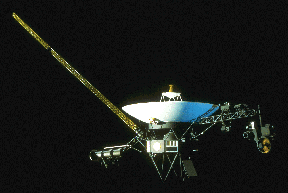
The rare geometric arrangement of planets Jupiter, Saturn, Uranus, and Neptune in the 1980's made it possible for the Voyager spacecrafts to visit them over a 12 year span instead of the normal 30. They
...more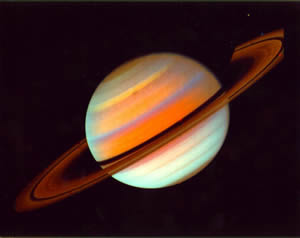
Like the inner planets and Jupiter, Saturn is clearly visible in the night sky. The ancient Greeks named the planet after the god of agriculture and time. It wasn't until 1655, however, that we knew Saturn
...more
The dramatic appearance of Saturn stems mainly from the spectacular rings. What is visible of the atmosphere is much less dramatic. The clouds of Saturn are much less colorful than those of Jupiter. This
...more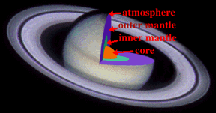
The Giant planets do not have the same layered structure that the terrestrial planets do. Their evolution was quite different than that of the terrestrial planets, and they have less solid material inside.
...more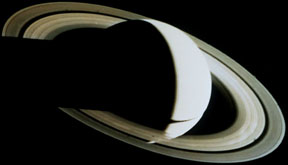
Many people are fascinated by Saturn's rings. Although Saturn isn't the only planet with rings, it is the only planet famous for them. Almost every image or drawing of the planet has the rings included.
...more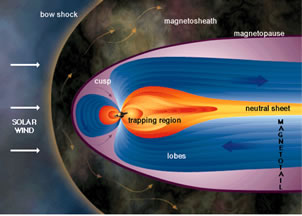
Saturn's magnetosphere is not as big as Jupiter's, but is very large nonetheless. It extends well beyond the orbits of Saturn's moons. It is probably generated in the same manner as is Jupiter's, which
...more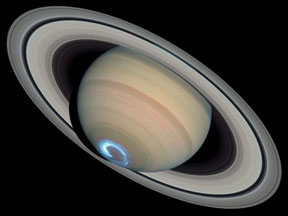
There's a lot of strange and interesting stuff going on at both the North and South Poles of Saturn. Features at the poles of two of Saturn's moons, Titan and Enceladus, have also grabbed the attention
...more














